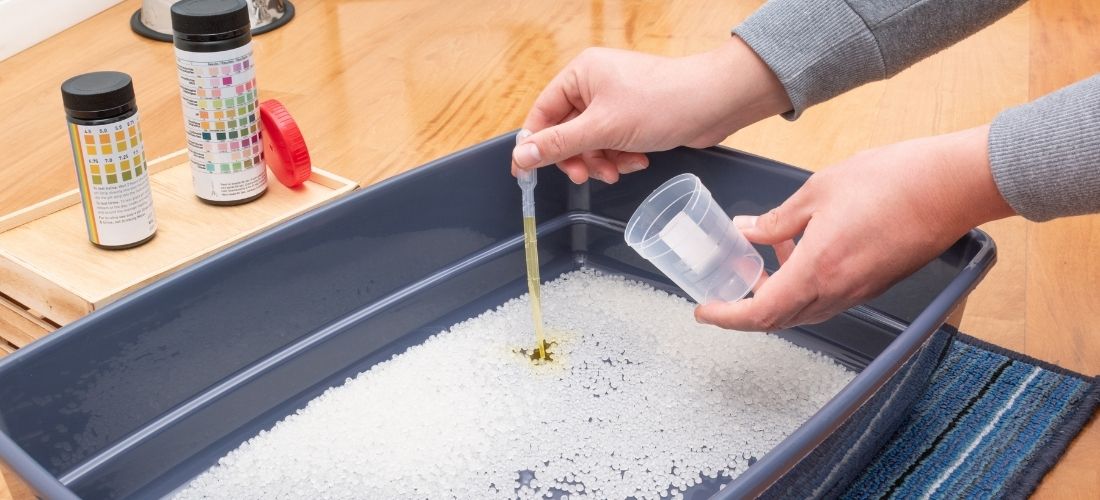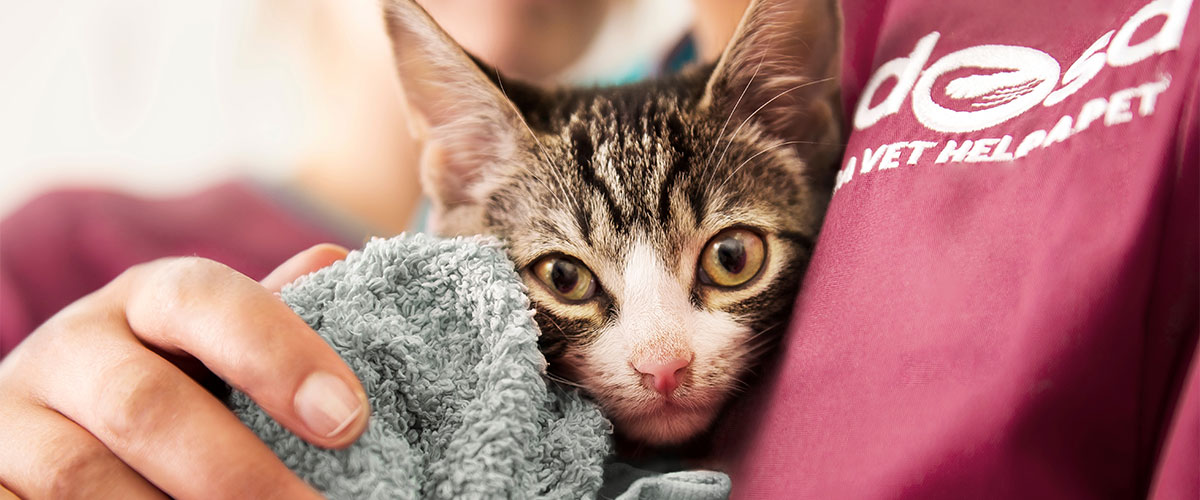How to collect a urine sample from your cat
Overview
- This guide is designed to help you collect a urine sample from your cat.
- Collecting a urine sample from a cat isn’t as tricky as it sounds – with the right equipment and knowledge it’s usually quite a simple process.
- Always let your vet know if you are struggling to collect a sample – they will be happy discuss other options with you.

Equipment needed:
- Your cat’s normal litter tray
- A pack of non-absorbent litter (or some shredded magazine paper)
- A syringe or dropper
- A sample pot
- A pen (for labelling)
Guide:
- Check if your vet needs you to collect the sample at a certain time (for example, first thing in the morning). Try to collect the sample as close to this time as you can to make sure results are as accurate as possible.
- Empty, clean, rinse and dry your cat’s litter tray – this is important because dirt, chemicals, and even water can contaminate the sample.
- Sprinkle some non-absorbent litter into the tray – ideally one that’s designed for collecting urine samples. If this isn’t possible you could try shredded paper (preferably from a magazine because it doesn’t leak ink or absorb liquid too quickly).
- Put the tray back to its normal place and wait for your cat to pee! You may need to lock the cat flap to stop them peeing outside – but be sure to let them out if they find this distressing.
- Check the tray regularly to see if your cat has toileted. If your cat passes faeces, remove it (and any surrounding litter) as soon as possible to avoid contamination of the urine sample.
- When your cat has urinated, put on some gloves and tip the tray to pool the urine in one corner. Suck up the sample using a syringe or dropper and place it into a sample pot. If you don’t have any gloves, wash your hands before and after handling the litter tray.
- Label your cat’s sample with your name, their name and the time/date it was collected.
- Ideally take the sample straight to your vet, but if this isn’t possible, store it in the fridge. The sooner the sample is tested, the more accurate it will be.
 Video found at youtu.be/rZmoiLXfDNY
Video found at youtu.be/rZmoiLXfDNY
Top tips:
- If your cat doesn’t normally use a tray, you might need get them used to it by using some regular cat litter before the non-absorbent type.
- If you wash and dry your non-absorbent cat litter very thoroughly, you should be able to store it and use again in the future.
What if I’m not able to collect a sample?
Don’t worry if you aren’t able to collect a sample at home – your veterinary practice will be able to help you. Your vet may suggest that your cat comes for a stay in the clinic, where they can repeat the same process and wait for them to urinate, or they may suggest a procedure called ‘cystocentesis’ – where urine is taken directly from the bladder using a needle and syringe.
What will my vet test my cat’s urine for?
Urine can be used to help diagnose many different conditions such as:
- Bladder infections
- Stress cystitis (FIC)
- Kidney disease
- Bladder stones
- Diabetes
Many urine tests can be carried out in-house by your own vet, but some need to be sent away to a lab. Some of the most common things we check urine for include:
- Concentration (dilute urine can indicate a number of problems, for example kidney disease)
- Glucose (which can indicate diabetes)
- Protein, blood and inflammatory cells (which indicates inflammation of the bladder)
Published: October 2021
Did you find this page useful?
Tell us more
Please note, our vets and nurses are unable to respond to questions via this form. If you are concerned about your pet’s health, please contact your vet directly.
Thank you for your feedback
Want to hear more about PDSA and get pet care tips from our vet experts?
Sign up to our e-newsletter
Written by vets and vet nurses. This advice is for UK pets only. Illustrations by Samantha Elmhurst.

